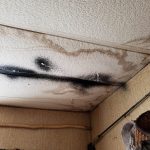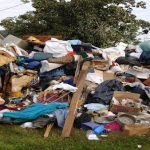A fireplace isn’t just a cozy feature — it’s an investment in your home’s comfort, efficiency, and value. Like any investment, it requires regular care. While many homeowners know the importance of fireplace upkeep, fewer realize how much a professional chimney sweep contributes to extending the lifespan of the system.
Whether your fireplace is a centerpiece for family gatherings or simply a backup heat source during cold winters, routine chimney sweeping plays a critical role in keeping it safe and functional for decades.
Table of Contents
The Connection Between Chimney Care and Fireplace Longevity
Every time you light a fire, byproducts of combustion rise through the chimney. Over time, this creates buildup that can damage the system if left untreated. A professional chimney sweep prevents this gradual wear and tear by removing soot, creosote, and debris before they compromise your fireplace.
The result isn’t just a cleaner chimney — it’s a fireplace that works more efficiently and lasts longer.
Problems a Chimney Sweep Helps Prevent
Neglecting regular cleaning can lead to costly repairs or even early replacement of fireplace components. Here are some of the most common issues avoided through professional sweeping:
1. Creosote Damage
Creosote is a sticky, flammable substance that clings to the walls of the flue. Over time, it can corrode liners and reduce airflow, putting extra strain on your fireplace. A chimney sweep safely removes creosote, protecting the system from long-term deterioration.
2. Masonry and Liner Cracks
When chimneys are clogged, heat doesn’t vent properly. This can cause the masonry or liners to crack under stress. Sweeps inspect for damage and keep airflow clear, reducing the risk of premature wear.
3. Blockages and Overheating
Leaves, twigs, and even animal nests often find their way into chimneys. These blockages not only restrict airflow but also trap heat, which can shorten the lifespan of fireplace components. Regular cleaning ensures your chimney stays clear.
4. Excessive Moisture
Moisture is one of the biggest enemies of chimney systems. A sweep can spot and address issues like failing caps or flashing, preventing water from corroding the interior and damaging the firebox.
Efficiency Equals Longevity
A fireplace that runs efficiently experiences less strain and lasts longer. By removing buildup and ensuring the flue operates as intended, a chimney sweep allows your system to burn cleaner and hotter with less smoke.
This efficiency not only preserves your fireplace but also reduces heating costs — an added benefit for homeowners looking to get the most value out of their investment.
How Often Should You Schedule a Chimney Sweep?
The National Fire Protection Association recommends annual chimney inspections and cleanings as needed. For frequent fireplace users, especially in colder climates, a yearly sweep is essential. Homes that burn softwood or unseasoned wood may require even more frequent service due to faster creosote accumulation.
By staying consistent with this schedule, you prevent small issues from turning into major problems, ultimately extending the usable life of your fireplace.
The Added Value of Professional Inspections
A good chimney sweep doesn’t just clean — they inspect. This means they can identify early warning signs such as minor cracks, loose mortar, or damaged caps. Catching these problems early saves homeowners from expensive repairs and keeps fireplaces in safe working condition for longer.
Key Takeaways for Homeowners
- Regular sweeping prevents buildup that damages fireplaces
- A chimney sweep improves airflow and efficiency, reducing strain
- Inspections catch minor issues before they shorten system lifespan
- Annual service is the best way to extend your fireplace’s value
Final Thoughts
Your fireplace can last for decades if it’s cared for properly — and the secret to that longevity lies in consistent chimney maintenance. By scheduling regular visits from a professional chimney sweep, you’re not just preventing fire hazards; you’re making sure your fireplace continues to bring warmth and comfort to your home for many years to come.







